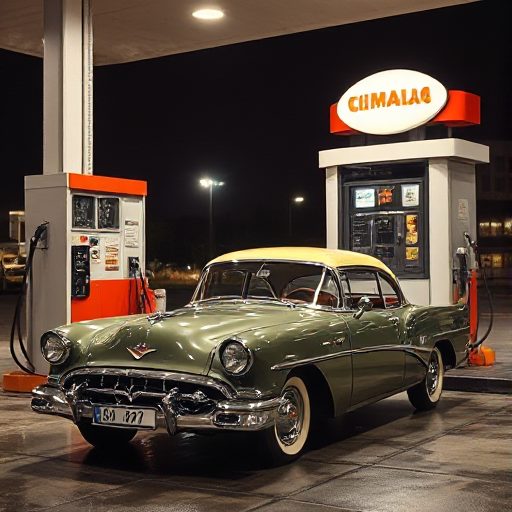As fuel prices continue to fluctuate, finding ways to maximize your vehicle’s gas mileage is more important than ever. Not only does improving your fuel efficiency save you money, but it also benefits the environment by reducing emissions. In this comprehensive guide, we will explore ten easy ways to increase your gas mileage. We’ll cover practical tips and strategies that can help you make the most out of every gallon of gas. So, let’s dive in and discover how to keep your fuel costs low and your vehicle running efficiently.
Go Easy on the Pedal
One of the simplest ways to improve gas mileage is to adopt smoother driving habits. Rapid acceleration, hard braking, and speeding can significantly reduce your fuel efficiency. According to Consumer Reports, reducing your speed from 65 miles per hour to 55 miles per hour can improve fuel economy by 6 to 8 miles per gallon in several vehicles.
Fuel Efficiency Tips:
Avoid aggressive driving and sudden stops.
Maintain a steady speed and use gentle acceleration.
Observe speed limits and drive at a consistent pace.
Leave Extras at Home
Carrying unnecessary weight in your vehicle can decrease your gas mileage. Every additional 100 pounds reduces your fuel efficiency by up to 1%. This reduction is more noticeable in smaller vehicles.
Fuel Efficiency Tips:
Remove heavy items from your trunk or backseat.
Avoid using your car as a storage unit for non-essential items.
Keywords: Reduce fuel consumption, car maintenance for fuel economy
Use Cruise Control
Using cruise control on highways can help maintain a steady speed and improve fuel economy. According to Edmunds, using cruise control can improve fuel economy by up to 14%.
Fuel Efficiency Tips:
Use cruise control on flat, open highways.
Avoid using cruise control on hilly or winding roads where constant speed adjustments are needed.
Turn Off the Car
Idling consumes fuel without providing any movement. The U.S. Department of Energy states that idling can burn as much as half a gallon of gas per hour, depending on air conditioning use.
Fuel Efficiency Tips:
Turn off your engine if you expect to wait for more than 10 seconds.
Avoid extended idling periods, especially in drive-through lines or while waiting for someone.
Check the Tire Pressure
For the best fuel economy, tires must be properly inflated. Under-inflated tires can reduce your fuel economy by about 3.3% for every 10 psi they are below the recommended pressure.
Fuel Efficiency Tips:
Maintain your tires inflated to the prescribed levels by the manufacturer and check your tire pressure once a month.
To guarantee accuracy, use a trustworthy tire pressure gauge.
Replace Spark Plugs
Fuel economy might drop by as much as 30% due to malfunctioning spark plugs. Your engine will operate smoothly and effectively if you replace your spark plugs on a regular basis.
Fuel Efficiency Tips:
As directed by the maintenance schedule for your car, replace the spark plugs.
Use high-quality spark plugs for better performance.
Check Tire Alignment
Misaligned tires can cause your vehicle to work harder, reducing fuel efficiency by up to 10%. Proper tire alignment ensures that your car rolls smoothly, improving gas mileage.
Fuel Efficiency Tips:
Have your tires aligned and balanced regularly.
Pay attention to signs of misalignment, such as uneven tire wear or a vibrating steering wheel.
Replace the Air Filter
A clean air filter allows your engine to operate efficiently by preventing contaminants from entering. Fuel economy can drop by roughly 10% due to a filthy air filter.
Fuel Efficiency Tips:
Replace the air filter according to your vehicle’s maintenance schedule.
Consider more frequent replacements if you drive in dusty or polluted environments.
Sometime in the morning or late at night, fill up your tank.
Avoid Rush Hour
Driving during rush hour leads to frequent stops and starts, which wastes gas.Plan your travels to avoid excessive traffic if at all possible.
Fuel Efficiency Tips:
Travel during off-peak hours to minimize stop-and-go traffic.
Use real-time traffic apps to find the quickest and least congested routes.
Which Techniques Get You More Mileage?
The best strategies for increasing gas mileage include driving at a consistent, moderate speed, using cruise control, and maintaining your vehicle properly. These practices help reduce fuel consumption and improve overall efficiency.
What Causes Poor Gas Mileage?
Poor gas mileage can result from various factors, including mechanical issues, poor driving habits, and lack of vehicle maintenance. Regular maintenance is crucial to keep your vehicle running efficiently.
What is the optimal speed for miles per gallon (MPG)?
Each vehicle has its own optimal speed for fuel efficiency, but generally, driving at 50 miles per hour or less yields the best fuel efficiency. Higher speeds increase fuel consumption and cost drivers more.
The Bottom Line
There are numerous ways to make your tank of gas last longer. By adopting efficient driving habits, maintaining your vehicle, and planning your trips wisely, you can save money and reduce your environmental impact.
Tips for Increasing Gas Mileage
Drive Smoothly
Avoid aggressive driving and maintain a steady speed.
Lose WeightTo lighten
your car, get rid of things that aren’t needed.
Use Cruise Control
Maintain a consistent speed on highways with cruise control.
Turn Off Engine When Idle
Turn off your car if you expect to wait for more than 10 seconds.
Replace Spark Plugs
Keep your engine running efficiently by replacing spark plugs as needed.
Align Tires
Proper tire alignment improves fuel efficiency and extends tire life.
Replace Air Filter
A clean air filter allows your engine to run efficiently.
Refuel When Cool
Fill your tank in the early morning or late at night when fuel is denser.


